The Story of Culture and Arts
- Image resource of Korean history
- Documents from History TextBooks
- Culture & Art Stories from Korean History
- Culture & Art Stories from Korean History - Korean
- National Institute of Korean History
- History net
- About the site
- Introduce
-
Numerous topics related to Korean culture and art are mentioned in middle and high school national history textbooks, but most of them are briefly described by era, making it difficult to understand their concepts, transition processes, and characteristics.
<Culture & Art Stories from Korean History> produces and provides video materials based on expert commentary on the flow, change process, characteristics and characteristics of each major topic in the field of culture and art in Korean history.

Scenario
A 2019 London fashion house.
During the runway show of British fashion designer Edward Crutchley, a model is wearing a familiar hat. The eye-catching headpiece is none other than the Joseon gat. Designers find the gat’s simplicity, airiness, and sophisticated silhouette breathtaking. However, there are those who recognized the charm of these items over a century ago. Hats were a commonly seen fashion item in the West at the time. So why did Westerners find Joseon hats so singular?
Joseon hats caught one’s eye due to their unique nature. Embodying a variety of meanings beyond a simple fashion item, let’s take a look at one aspect of Joseon charm.
Why did Foreigners Find Joseon Hats Unique?
Dressed in the finest silks, but doesn’t it feel as if something is missing? At that time in Joseon Korea, it was considered improper to have an exposed topknot. So, a hat was used to cover it.
Korea is the kingdom of hats. Never in this world have I seen a nation with so many varieties of hats. - Charles Varat, Deux voyages en Corée (1892)
The Joseon kingdom was called the kingdom of hats for a reason-there were so many different varieties. Depending on one’s status and where one was, a different hat was worn.
You can see the differences clearly just by looking at some South Korean currency. The scholar Yi Hwang is wearing a bokgeon, Yi I is wearing the jeongjagwan, a house hat worn by aristocrats, and King Sejong is wearing the ikseongwan, a hat used while performing his kingly duties.
Just by looking at someone’s hat, you can tell who they are-if they are resting at home, if they are out on an errand, or if they are in the middle of working.
Then which of the following is not a hat worn by aristocrats in the Late Joseon Dynasty?
The answer is the paeraengi.
Commoners also wore hats befitting their status. If they couldn’t afford them, some men also walked around with exposed topknots.
For formal attire, women wore either jokduri, a hwagwan, or something else, but members of the aristocracy or royalty wore a neoul. There was also the sseugae worn by ordinary women that was used like a sleeved jang-ot to cover their face.
In Shin Yunbok’s painting of a man and woman during a late-night rendezvous, the woman is depicted covered in a sseugae chima. People went around wearing all sorts of hats. Did these hats appear so special to the foreign eye?
“Hats are used on a daily basis in other countries as well, so foreign visitors knew a lot about hats. When they arrived in Korea, Korea seemed unique due to the different ways hats were used, with different hats for different stations or occupations, or even depending on the season.” Choi Eun-Soo, Curator / National Folk Museum of Korea
Trendy Fashion Accessories among Joseon Men?
Joseon seonbi (literati elite) felt proper clothes brought about a proper state of mind. Among the many hats, there was one hat that most represented the seonbi ideology. This was the gat.
… He divests himself of his outer garments, … but his hat stays on; and so it sticks to him through life, … a permanent black halo. - Percival Lowell, Chosön, The Land of the Morning Calm (1886)
When it rained, they coupled the gat with a galmo overtop. When the weather turned cold, the literati would first put on a hwihang, and then put their gat on top. Why did the seonbi insist on wearing a gat?
“For the seonbi, wearing proper attire was a part of their lifestyle, and it represented pride, dignity, and status.” Oh Chang Sik, Director / Jaun Seowon Confucian Academy
You can notice the proper spirit of the literati in the way they put on their gat. First, pull your hair into a topknot and then cover it with the sangtugwan. Use the manggeon to hold back any stray hair and then adjust it to your head. Now put on the tanggeon and then top it all with the gat.
Here is the key!
The proper way to wear a gat is not to have it cover the forehead, but to wear it so it appears to sit atop the head.
“The gat was originally a handcrafted piece made from bamboo. The crown and brim were made out of bamboo and assembled separately.” Park Changyeong / Master of National Intangible Cultural Property No. 4, Gat-making
As time passed, the brim continued to be made of bamboo, but the crown came to be made with horsehair. Why did horsehair come to replace bamboo? The doors on houses from the Joseon period were low and narrow, so as people entered a room, they had to bow their heads. And when they wore a hat made of bamboo, it would often crack or break.
As such, the materials of hats worn by Joseon period men often differed based on their needs. The shapes also changed depending on the fashion of the time.
“In the early Joseon period, hats were much rounder, with brims reaching 45-50cm in breadth. The brims would extend just past a man’s shoulders. In hats from the mid to late Joseon period, we see a much larger brim at over 61cm, extending far past the shoulders.” Park Hyeong-bak / Graduate of National Intangible Cultural Treasure Gat-Making Course
Seonbi paid close attention to fashion, following all trends regarding the shape of the crown and brim.
Recently, a hat is too high and the brim too wide, so it becomes difficult to pass through doors. Is such a trend not rather queer? From now on, those wearing gat with brims too wide will be banned. - Hyojong sillok (Veritable Records of King Hyojong), Month 1, Day 10, Year 8 of King Hyojong’s reign (1657)
While a trend emerged for extremely large gat, those that were absurdly large were forbidden by law.
Only we in Joseon have gat strings. These useless things are bought and sold for an exorbitant amount of money. I request that this system be abolished. - Veritable Records of King Jungjong, Month 1, Day 8, Year 3 of King Jungjong’s reign (1508)
Exceedingly elaborate and expensive gat accessories also became an issue. Gat were so cherished that there were hat boxes made specifically for them. In that case, how much was a gat, that must-have for a seonbi?
“Horsehair and bamboo were prepared in advance, and they had to be like fine strands of thread. Then the brim and crown were made. But then there was also the ipjajang who connects the brim and the crown. This takes many man hours to accomplish. Even in the Joseon Dynasty, the purchase price of a gat amounted to a month and a half’s wages for a government employee.” Choi Eun-soo, Curator / National Folk Museum of Korea
The reason the gat was so expensive was due to the fact that every single strand was woven by hand. It is said to have taken more than a month to make a single gat out of bamboo and horsehair. Examining this simple black gat closely, we can discern the intricate beauty born from the fingertips of a master craftsman. However, the gat began its decline after the 1895 decree banning topknots.
As the number of gat wearers dwindled, so did the number of hat makers.
“I’m a 4th-generation hat maker. I began at age 16, and I have made hats for over 60 years. Today, (for the makers of the gat), there remain only two ipjajang, one yangtaejang (brim maker), and one chongmojajang (crown maker).” Park Changyeong / Master of National Intangible Cultural Property No. 4, Gat-making
It may be thanks to the artisans who have silently kept the tradition alive that the hat from a few centuries ago still garners global attention. The gat is not simply a fashion item, but a valued item of cultural heritage, and a symbol of the spirit of the Joseon culture.
[Epilogue]
Must-Know Facts on Culture and Art in Korean History
1. Many Joseon period people wore hats for reasons of decency.
2. You could figure out a person’s status and situation by the hat they wore.
3. From 1895, after the decree forbidding topknots, gat-wearing culture declined.
Life & Folklore
17 films-
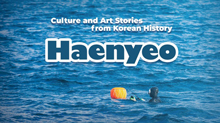 Haenyeo, female divers in Jeju08:52
Haenyeo, female divers in Jeju08:52 -
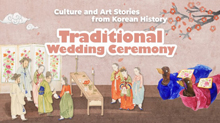 Traditional Wedding Ceremony08:22
Traditional Wedding Ceremony08:22 -
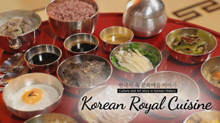 Korean Royal Cuisine08:22
Korean Royal Cuisine08:22 -
 Gat and Traditional Headwear of Korea08:48
Gat and Traditional Headwear of Korea08:48 -
 Managing Epidemics throughout Korean History08:48
Managing Epidemics throughout Korean History08:48 -
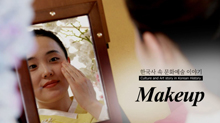 Makeup07:52
Makeup07:52 -
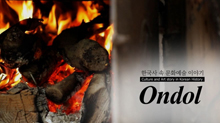 Ondol, Korea's Underfloor Heating System08:40
Ondol, Korea's Underfloor Heating System08:40 -
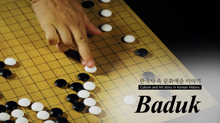 Baduk08:32
Baduk08:32 -
 Four Treasures of the Study09:34
Four Treasures of the Study09:34 -
 Farming Implements09:12
Farming Implements09:12 -
 Coming-of-Age Ceremony08:41
Coming-of-Age Ceremony08:41 -
 Ginseng08:44
Ginseng08:44 -
 Tobacco08:27
Tobacco08:27 -
 Kimchi08:37
Kimchi08:37 -
 Relief Crops08:37
Relief Crops08:37 -
 Korean Currency09:28
Korean Currency09:28 -
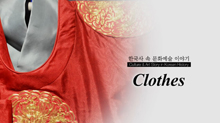 Clothes08:20
Clothes08:20

